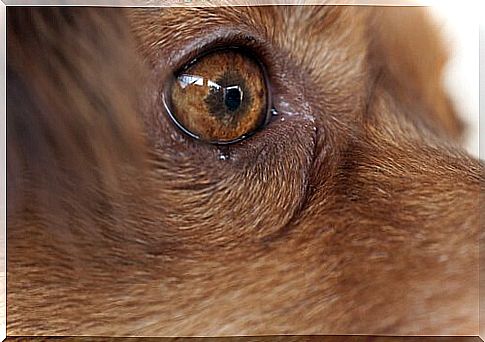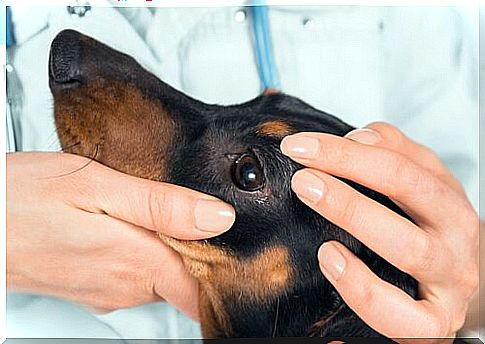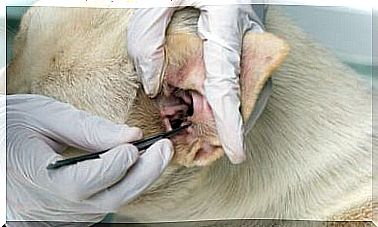Eye Worms In Dogs: Causes, Symptoms And Treatment

This disease, which is particularly common in summer, is caused by the fruit fly and affects the dog’s mucous membranes. In this article we will explain the causes, symptoms and treatment of the disease caused by eye worms (Thelazia Callipaeda) so that you can recognize this infection in your dog in good time.
Causes of the eye worm disease in dogs
The parasite, also known as the “oriental eye worm” , is a roundworm that is between 7 and 17 millimeters in length. Eye worms prefer to “hide” under the third eyelid and the tear ducts.
The carrier of this disease is the fruit fly, which absorbs the eye fluid and uses it to lay eggs. After the larvae hatch, they nest in the conjunctival sac and conjunctiva of the eye for the next three weeks to develop.
The eye worm infection is most common in dogs and cats, but it can also affect other animal species such as wolf or fox and even humans.
Symptoms of eyeworm infection
If the eye worm disease is left untreated, this can lead to severe infections and a massive multiplication of worms and in the worst case even to temporary or permanent blindness.
Owners of a sick animal usually notice that the eyes – one or both – are puffy and secrete a white-greenish substance that attracts more flies and makes the disease worse. A change in the dog’s behavior is also likely to be noticed. Often an affected animal rubs its face constantly on its front paws to relieve the itching.

One should always pay attention to whether there are many flies buzzing around the dog. Because they are a sign that they are feeding on the tear fluid of the four-legged friend. If you gently open your pet’s eyelid, you can spot a type of fine white eyeworm that moves quickly in front of the retina, trying to hide from the light.
Prevention and treatment
Especially in dogs that live or outdoors often remain in gardens with fruit trees an inspection at eye worms is very important. Because there they are particularly exposed to the fruit flies, the carriers of this disease. You should also dispose of your organic waste in the house regularly (after one day at the latest) so as not to attract these small insects.
As a further measure, we recommend the use of so-called “spot-on” preparations, which protect against infestation with fleas, ticks and other parasites such as fly larvae. This preparation should be used all year round, but especially in summer, because infections and bacterial diseases are particularly common at this time of the year.
If you have young children between the ages of three and six at home, you should be even more careful. Because the little ones in particular are exposed to an increased risk of contracting this infection. In summer and autumn the fruit flies are particularly active and the number of diseases increases.
As soon as you spot these little worms in your dog’s eye, you should immediately take him to a veterinarian for treatment. The eye worms are removed manually with sterile tweezers or swabs after the affected area has been cleaned with an isotonic saline solution.

In addition, the vet will give the four-legged friend a drug to prevent the growth and spread of the parasite and, above all, the further development of the eggs, which are difficult to recognize. If the eye worm infection is treated early enough, symptoms will usually go away within three days.
Dogs that have had worse effects of the disease, even ulcers or corneal inflammation, may need longer veterinary treatment after the eyeworms have been completely removed until they are completely healthy again.









